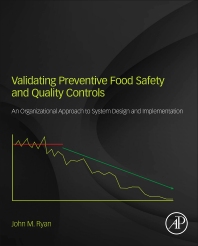Refrigerated Foods Report: Food Safety Update
Consumers aren’t the only ones who like new products. Many refrigerated food company executives also were looking for a new product - a report, in this case - from the Refrigerated Food Association (RFA).

Fresh News
Consumers aren’t the only ones who like new products. Many refrigerated food company executives also were looking for a new product - a report, in this case - from the Refrigerated Food Association (RFA).
During its 2009 annual conference, March 1-4, in Orlando, RFA released the industry’s most thorough and objective guide to measuring the shelf life of refrigerated prepared foods. Actually, the new report - billed as the “Standardized Protocol for Determining Shelf Life of Refrigerated Foods” - updates research that was conducted nearly 10 years ago and released in 2002.
Martin Mitchell is a managing director for Certified Laboratories, Plainview, N.Y., as well as RFA’s technical director.
“This standardized protocol is intended to provide a framework such that individual processors or their customers can compare their stated shelf life against like products produced by other companies,” he says. “This revised RFA document will help food manufacturers ensure that their products are high-quality and safe.”
Presenting the new data was Dr. Catherine Donnelly, Ph.D. A professor of Nutrition and Food Science at the University of Vermont, Dr. Donnelly is a respected researcher in Listeria monocytogenes detection and a co-author (with Mitchell) of RFA’s 2002 Shelf Life Protocol.
Mitchell says the new document addresses:
1. Shelf life analysis-verification: Complete testing to assure that consistent microbiological, chemical and sensory standards are measured; and that parameters that dictate end of shelf life are identified.
a. Microbiological – For shelf life verification, products will be subjected to analysis for the following: Aerobic Plate Count (APC), coliforms, E. coli, Staphylococcus aureus, lactobacilli, yeasts and molds.
b. Chemical – pH, TA, Aw and temperature.
c. Sensory analysis – Sensory specification that identifies important organoleptic attributes and acceptable tolerances around them.
2. Challenge studies: Performed in order to assess the fate of two specific pathogens (L. monocytogenes and - in the case of reduced-oxygen packaging - non-proteolytic C. botulinum type E). Mathematical modeling is recommended to determine the potential for growth and toxin production by non-proteolytic C. botulinum type E in the product.
Mitchell says that he and Donnelly first conducted a comprehensive literature review to establish current “best practices” for how the industry determines shelf life for refrigerated ready-to-eat (RTE) foods. Moreover, the updated protocol considers (1) how consumers handle product during the shelf life period, (2) product handling and holding temperatures, (3) product composition - meaning whether the refrigerated RTE foods contain preservatives, (4) packaging materials and (5) whether products were packaged under modified atmospheres or had pH adjustment to extend shelf life.
Mitchell concludes, “Since 2002, a number of important regulatory and technological changes have been adopted within the food industry, necessitating that we update this protocol.”

Fresh News
Consumers aren’t the only ones who like new products. Many refrigerated food company executives also were looking for a new product - a report, in this case - from the Refrigerated Food Association (RFA).
During its 2009 annual conference, March 1-4, in Orlando, RFA released the industry’s most thorough and objective guide to measuring the shelf life of refrigerated prepared foods. Actually, the new report - billed as the “Standardized Protocol for Determining Shelf Life of Refrigerated Foods” - updates research that was conducted nearly 10 years ago and released in 2002.
Martin Mitchell is a managing director for Certified Laboratories, Plainview, N.Y., as well as RFA’s technical director.
“This standardized protocol is intended to provide a framework such that individual processors or their customers can compare their stated shelf life against like products produced by other companies,” he says. “This revised RFA document will help food manufacturers ensure that their products are high-quality and safe.”
Presenting the new data was Dr. Catherine Donnelly, Ph.D. A professor of Nutrition and Food Science at the University of Vermont, Dr. Donnelly is a respected researcher in Listeria monocytogenes detection and a co-author (with Mitchell) of RFA’s 2002 Shelf Life Protocol.
Mitchell says the new document addresses:
1. Shelf life analysis-verification: Complete testing to assure that consistent microbiological, chemical and sensory standards are measured; and that parameters that dictate end of shelf life are identified.
a. Microbiological – For shelf life verification, products will be subjected to analysis for the following: Aerobic Plate Count (APC), coliforms, E. coli, Staphylococcus aureus, lactobacilli, yeasts and molds.
b. Chemical – pH, TA, Aw and temperature.
c. Sensory analysis – Sensory specification that identifies important organoleptic attributes and acceptable tolerances around them.
2. Challenge studies: Performed in order to assess the fate of two specific pathogens (L. monocytogenes and - in the case of reduced-oxygen packaging - non-proteolytic C. botulinum type E). Mathematical modeling is recommended to determine the potential for growth and toxin production by non-proteolytic C. botulinum type E in the product.
Mitchell says that he and Donnelly first conducted a comprehensive literature review to establish current “best practices” for how the industry determines shelf life for refrigerated ready-to-eat (RTE) foods. Moreover, the updated protocol considers (1) how consumers handle product during the shelf life period, (2) product handling and holding temperatures, (3) product composition - meaning whether the refrigerated RTE foods contain preservatives, (4) packaging materials and (5) whether products were packaged under modified atmospheres or had pH adjustment to extend shelf life.
Mitchell concludes, “Since 2002, a number of important regulatory and technological changes have been adopted within the food industry, necessitating that we update this protocol.”
Looking for a reprint of this article?
From high-res PDFs to custom plaques, order your copy today!




